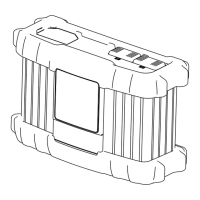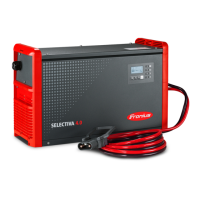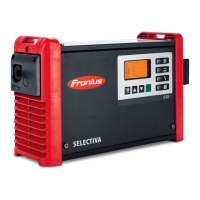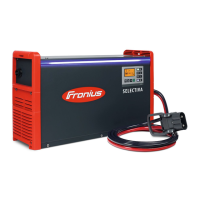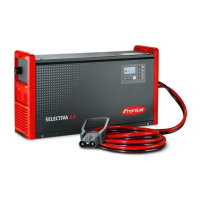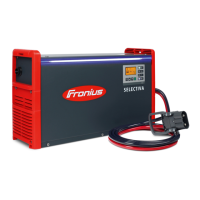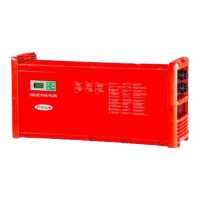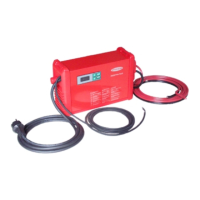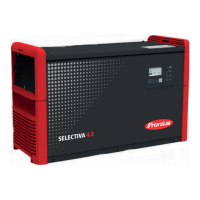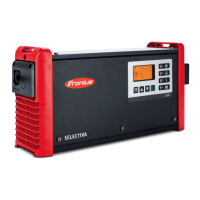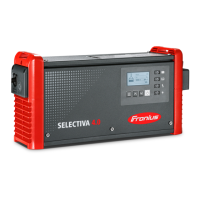Warning notices
on the device
A number of safety symbols can be seen on the charger's rating plate. These
safety symbols must not be removed or painted over.
Ser. No.:
Part No.:
UDC nom.
IDC max.
Protective class I
IAC max.
UAC nom.
PAC max.
www.fronius.com
OVC III
IP20
xxV
xxxA
xxA
3~ NPE xxxV 50/60Hz
xxxxW
Fronius International GmbH
Froniusstraße 1
4643 Pettenbach
Austria
xxxxxxxx
xxxxxxxx
4,010,xxx
Selectiva x.0 xxxx xkW
Ladevorgang immer stoppen bevor das Ladekabel abgezogen wird!
Explosive Gase. Flammen und Funken vermeiden.
Während des Ladens für ausreichend Frischluft-Zufuhr sorgen!
Always stop charging before you disconnect the charging cable!
Explosive gases. Prevent flames and sparks.
Provide adequate ventilation during charge!
Toujours arrêter la charge avant de déconnecter le câble de charge!
Gaz explosifs. Éviter les flammes et les étincelles.
Prévoir une ventilation adaptée pendant la charge!
¡Detener siempre la carga antes de desconectar el cable de carga!
Gases explosivos. Evitar llamas y chipas.
¡Mantener una ventilación adecuada durante la carga!
Interrompere sempre la carica prima di scollegare il cavo di carica!
Gas esplosivi. Evitare fiamme libere e scintille.
Predisporre una ventilazione adeguata durante la carica!
WARNUNG - WARNING - ATTENTION
ADVERTENCIA - AVVISO
42,0409,0419
An electric shock can be fatal. The housing must never be opened by
anyone other than a service technician trained by the manufacturer.
The device must be disconnected from the mains before starting any
work with the housing open. A suitable measuring instrument must be
used to ensure that electrically charged components (e.g. capacitors)
are fully discharged. Ensure that the device remains disconnected
from the mains until all work has been completed.
Do not use the functions until you have fully read the Operating In-
structions.
Possible sources of ignition, such as fire, sparks and naked flames,
must be kept away from the battery.
Risk of explosion! Oxyhydrogen is generated in the battery during char-
ging.
Battery acid is corrosive and must be kept away from eyes, skin and
clothes.
Ensure an adequate supply of fresh air during charging.
The charger can cause DC fault currents in the ground conductor. If a
fault current protection device (RCD) is used on the mains side to pro-
tect against electric shock, it must conform to type B.
Do not dispose of the product in domestic waste. Dispose of it accord-
ing to the disposal requirements for waste electrical and electronic
equipment valid at the installation site.
14

